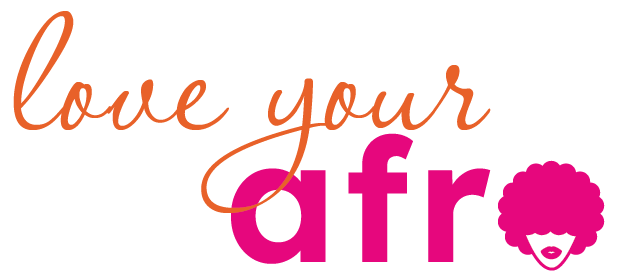Common Misunderstandings about Afro Hair
Hair products are NOT developed to absorb into the hair.
Hair products, especially conditioners, are not intended to be absorbed into the hair. Instead, they coat and lubricate the hair, making it feel smooth, improving manageability, and reducing friction and tangles.
Although these products are often marketed as “moisturizing,” their primary function is to condition the hair through surface lubrication rather than changing its internal water content.
Cuticles don’t open and close like blinds
The hair cuticle consists of millions of overlapping scales that point downward. Its primary function is to protect the inner cortex and medulla (if present) from damage.
While the structure of the cuticle can change and become more permeable, it does not actively open and close as many consumers believe. People often think cuticles open to allow products to penetrate and close to retain them, but this is inaccurate. When the cuticle appears lifted, it is because it has become detached from the intercellular cement that keeps it in place.
Water SHOULD bead on the hair
Healthy hair features a lipid-membrane structure, known as the F-layer, on the outer surface of the cuticle. This hydrophobic layer causes water to bead up on the hair’s surface. It is a crucial barrier, preventing cosmetic agents from easily penetrating the hair’s core.
Hydrated hair is a misnomer
The terms “hydrated” and “moisturized” hair are misleading scientifically, as they do not accurately describe the relationship between hair and water.
As previously mentioned, undamaged hair repels water, causing it to bead on the strands. Hair’s water content is not constant; it changes dynamically based on the relative humidity of the surrounding environment. Hair will adjust to its surroundings, absorbing or losing water until its moisture level is balanced with the air.
Conventional hair products do not significantly change hair’s natural water content. Companies use this terminology to appeal to consumers and help them sell their products. Daily cosmetic treatments have little impact on hair’s interaction with water.
You don’t need “moisturized” hair. You want “conditioned” hair. Also, your hair isn’t dry.
The beauty industry uses the terms “moisturizing” and “hydrating” as marketing tools to appeal to consumer sentiment, even though these terms are not scientifically accurate regarding the water content of hair. Consumer sentiment drives the industry, leading to potential misunderstandings of these terms.
Consumers often associate “moisturized” hair with characteristics such as pliability, softness, and manageability, which are commonly experienced when hair is wet or well-conditioned. This can create confusion. When consumers touch hair, they seek lubrication and slip (reduced friction), which they interpret as moisture. In reality, this sensation relates to the alignment of hair fibers and the coatings applied to them rather than the actual water content.
Conditioners play a crucial role in this process. They work by depositing a lubricating layer on the hair’s surface, which enhances its perceived condition. Conditioners typically contain cationic surfactants, emollients, and other ingredients that interact with the hair to provide lubrication, smoothing, and protection.
The sensation that consumers often describe as “dryness” is usually related to the surface condition of the hair, specifically the cuticle, rather than a lack of internal moisture. Trefor Evans, Ph.D., points out that when consumers believe their hair is dry, it is typically due to damaged cuticles 95% of the time. This type of damage is often irreversible. However, using high-quality rinse-out (or deep) conditioners and leave-in conditioners and styling creams can help mitigate the following issues:
Roughness and Coarseness: When the hair cuticle is damaged, the outer layer scales become lifted or broken, resulting in a rough surface that feels coarse to the touch.
Tangling: Damaged cuticles with raised scales can snag on one another, resulting in increased friction and tangling.
Lack of Shine: Smooth cuticles effectively reflect light, resulting in shiny hair. In contrast, a damaged, rough cuticle scatters light, making the hair appear dull.
Additionally, it’s important to note that color and texture can affect how light reflects on hair. For example, most afro-textured hair isn’t smooth like straight hair, so it won’t reflect light the same way, even if the cuticles are intact.
References
A Deep Dive into Curly Hair with Dr Crystal Porter (J. Novakovich, Interviewer). (2023, October 4). https://www.theecowell.com/podcast/crystal
Evans, T., & Wickett, R. R. (Eds.). (2012). Practical Modern Hair Science [PDF]. Allured Business Media. https://library.triprinceton.org/1t0nsnb/1
Novakovich, J [Hardcore #BeautyScience Gang - The Eco Well Notes]. (2020, August 5). Hair Care Beauty Science Panel 8/5/2020 [Video]. YouTube. https://youtube.com/live/sZI81GVLYRA
Novakovich, J [Hardcore #BeautyScience Gang - The Eco Well Notes]. (2023, September 24). Hair Care Misconceptions with Michelle Wong PhD at the Hair Science E-Summit [Video]. YouTube. https://www.youtube.com/watch?v=hdL31ouZM6w
Novakovich, J. [Hardcore #BeautyScience Gang - The Eco Well Notes]. (2023, September 24). Hair Structure 101, Trefor Evans Ph.D. from TRI Princeton at the Hair Science E-Summit [Video]. YouTube. https://youtube.com/watch?v=nEJygXgtG-0
Schmidt, C. (2020, December 12). What Is A Hair Cuticle? Formulate. https://www.formulate.co/journal/p/hair-cuticle/her

